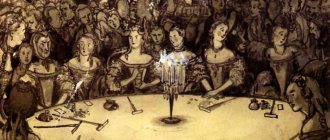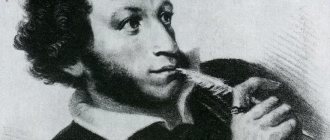Chapter 1
In the fifteenth century, the Don Cossacks settled on the Yaik River, now known as the Ural.
Next to them lived nomadic Tatar families. At first, the tribes were at enmity with each other, but soon, due to the fact that the Cossacks began to receive wives from the Tatar uluses, relations became almost friendly. The Cossacks felt an urgent need for protection. A messenger sent to Mikhail Fedorovich brought a letter from the sovereign, where they were given permission to go to the Yaik River from the headwaters to the mouth. They continued to rob sea ships and commit robbery attacks on coastal villages. The Shah was forced to complain to the Tsar. Letters of exhortation came from Moscow. The Cossacks came to the sovereign to confess. As punishment, they were sent to fight in Poland.
The beginning of the rebellion was facilitated by the transfer of the Yaik Cossacks to the department of the Military Collegium. The people stopped feeling free and independent. Complaints to the empress about oppression led to nothing. All those dissatisfied were executed. Discontent resulted in a rebellion in 1771. General Freiman was entrusted with pacifying the rebels. Order was restored. The rebels are flogged and imprisoned.
History of the Pugachev rebellion - main events and dates
The Pugachev historical revolt began in September 1773 in the area of the Tolkachev farm in the Yaitsky town.
The riot lasted three stages. Pugachev declared himself Peter III, who miraculously escaped after Catherine's accession to the throne as head of state. Then he began to distribute letters and stories, where he promised to grant people freedom with land and free them from recruits, since he pretended to be a king.
In October, Pugachev began to gather an army and recruited about 2,500 people. During the siege of Orenburg, 15,000 people joined him and continued to move towards the capital. In addition, his associates acquired 86 guns. Like Emelyan, at the same time Yulaev raised an uprising in Bashkiria, Zarubin in Ufa, Ovchinnikov in Yaitsk, and Arapov in Samara.
In January 1774, the uprising swept the Lower Volga region and the Southern Urals. To suppress the rebellion, Catherine sent an army led by Bibikov. The uprising reached the Tatishchevo fortress in the Orenburg region, where a battle took place in March, as in Ufa. Pugachev's army suffered a number of failures. In April, Emelyan hid in the Ural mountains so that nothing would happen to him, and again gathered an army to besiege other cities.
In the period from July 12 to 17, Pugachev manages to take Kazan, Nizhny Novgorod, Voronezh, Penza and Tambov provinces. He continues his march to the homeland of the Don Cossacks in the hope of help. By July 31, he captured Saransk with Penza, Saratov, Kamyshin and Tsaritsyn. The Don Cossacks do not support him. In August, Pugachev issues a royal manifesto, freeing the peasants from their duties. At the beginning of autumn, the Yaik Cossacks arrest Pugachev and take him to Mikhelson, where Suvorov speaks out against the rebels. On January 10, 1775, all the leaders of the rebels were executed.
The main actions and events, the movements of the rebels are shown on historical maps.
Chapter 2
The leader of the Cossacks was Emelyan Pugachev, a Don Cossack who escaped from prison.
To give significance to his person, it was decided to pass off the rebel as the late Emperor Peter III. Emelyan's authority grew every day. Not only the Cossacks, but also neighboring peoples joined his gang. Which included Tatars, Kalmyks, Bashkirs. News about Pugachev’s new conquests flowed into Orenburg in a continuous stream. All those who disobeyed him were put to death. The number of the impostor's army grew. The success was stunning. The people's recognition of his authority gave him strength and confidence. Pugachev decided to move to Orenburg, where they had already been warned about his intentions. The Empress issues a manifesto, where she warns the people about the danger posed by the arrival of Pugachev.
Chapter 3
Orenburg was besieged.
Pugachev easily managed to win the sympathy of local peasants who decided to go over to his side. The robber Khlopusha joined the rebels. A man with a rich criminal past and excellent knowledge of the area, he became Pugachev’s indispensable assistant. These are not the best times for Orenburg. A terrible famine came to the city along with the cold. The number of the bandit's army was already twenty-five thousand people. The Cossacks were rampant. They robbed houses, drank, and indulged in fornication. They didn't really listen to the leader. Although they tried not to show it outwardly, for fear of reprisals.
Generals with troops arrived to help the besieged city, but the forces were unequal. Under pressure from the rebels, they were forced to retreat. The Empress was concerned about what was happening. She sends a man whom she trusted with everything to help. It was Chief General Bibikov. It is he who must deal with the rebels and show who is who.
Chapter 4
The rebels did not calm down.
It’s like they don’t care about anything. Bold and unprincipled, they continued robberies and robberies. By order of Pugachev, Khlopusha conquers the Ilyinsky fortress, but when taking Verkhne-Ozernaya, he is defeated, receiving fierce resistance, without even having time to reach it. Pugachev rushes to his aid. The leader managed to finish what he started. Despite the fact that the royal army was in the fortress, the fortress was conquered. All officers were killed. The Empress took the Pugachev family into custody. His house was ordered to be burned. A large reward has been promised for the capture of the impostor.
Chapter 5
The Empress was not deceived in General Bibikov.
He managed to calm the rebels and drive them out of Samara and Zainsk. Fortune began to slowly turn away from Pugachev. Emelyan was aware of the approach of the tsarist army. He intended to flee in case of danger, leaving his accomplices behind. The Yaitsky Cossacks had a different opinion on this matter. They did not plan to run away, deciding to act more cunningly. If they lose to the tsarist army, they will hand over Pugachev to the authorities, earning themselves forgiveness.
With huge losses, Golitsyn’s detachment still prevailed over Pugachev’s army. Pugachev escaped. Khlopusha was captured and executed. The impostor, having sat in the shadows for some time, decided to go to Orenburg again, but did not calculate his strength and was again defeated.
The Cossacks, even without a leader, were not going to stand aside, organizing a siege of the Yaitsky city. There was nothing to eat. The rebels held on with all their strength, preferring to die with honor, like real warriors, and not exhausted from hunger. Help came from unexpected places. Bibikov falls ill and dies.
Literature lesson in 8th grade. A. S. PUSHKIN. "HISTORY OF PUGACHEV'S REVOLT".
Literature lesson in 8th grade.
A. S. PUSHKIN. "HISTORY OF PUGACHEV'S REVOLT". ON THE APPROACH TO THE NOVEL "THE CAPTAIN'S DAUGHTER"
Lesson objectives:
find out the reasons for A. S. Pushkin’s appeal to history, what problems of history worried the poet; to acquaint students with the scientific and artistic chronicle of the events of the Pugachev rebellion, which became the basis for the historical novel “The Captain's Daughter”.
During the classes
I. Organizational moment.
II. Checking homework.
An expressive reading of K. F. Ryleev’s thought “The Death of Ermak”, followed by analysis and evaluation of the reading.
III. Studying a new topic.
1. Communicate the topic and objectives of the lesson.
2. The teacher's word.
The social situation in the 1830s was characterized by growing tension. The victory of the pan-European reaction, which began with the defeat of the Spanish revolution of 1820 and ended with cannon salvoes on Senate Square (1825), turned out to be short-lived. In 1830, Europe entered a new phase of revolutions. A wave of popular unrest swept across Russia. Under these conditions, Pushkin’s historical reflections acquired a particularly intense character. Trying to discern in the past those historical forces that would play a decisive role in the future, Pushkin saw three mysterious images, the mysterious behavior of which could determine the future fate of Russia: autocratic power, the highest possibilities of which seemed embodied in Peter; the enlightened nobility, reflecting on which it was necessary to decide whether it had exhausted its historical possibilities on Senate Square or was capable of filling another page in the history of Russia; and the people, whose image increasingly took on the features of Pugachev. Thus the knot of the main themes of creativity of the 1830s was tied.
The nobility as a whole, and especially the best part of it - the educated nobility, was perceived by Pushkin primarily as a force opposing the autocracy. However, already in one of the final scenes of “Boris Godunov” Pushkin showed a popular revolt. The popular uprisings of 1830 put the topic of uprising on the agenda. She first appears in “The History of the Village of Goryukhin” and has never left the pages of Pushkin’s works.
In the early 1830s. Pushkin was inclined to consider the ancient nobility, which had already lost its class privileges and property, as a natural ally of the people. This is how the idea of “Dubrovsky” was born, in which, as you remember, the main character, Vladimir Dubrovsky, became the leader of a peasant uprising.
However, the reality of such a plot raised doubts in Pushkin. On January 31, 1833, A. S. Pushkin begins “The Captain’s Daughter”; the original concept of the work developed in line with “Dubrovsky”: the center of the plot was supposed to be the fate of the nobleman Shvanvich, an enemy of the Orlovs, who went over to Pugachev’s side. But the novel “didn’t work...”. It was necessary to test my ideas on real historical material. On February 6, 1833, having completed the last chapter of Dubrovsky, Pushkin on February 7 applied for permission to familiarize himself with archival documents on the Pugachev case.
3. Reading the material from the textbook “Historical Epoch Developed in a Fictional Narrative” (pp. 102–103).
On November 2, 1833, Pushkin graduated from “The History of Pugachev.” In “Notes on the Rebellion” intended for Nicholas I, Pushkin gave an exceptionally clear sociological analysis of the uprising: “All the black people were for Pugachev... Only the nobility was openly on the side of the government. Pugachev and his accomplices first wanted to win over the nobles to their side, but their benefits were too opposite.”
– How was “The History of the Pugachev Rebellion” received? What is the general significance of this historical work of the great poet of Russia?
4. Completing reading the textbook article (pp. 104–105).
5. Acquaintance with excerpts from the “History of the Pugachev Rebellion.”
1) Reading ch. II, p. 97–98.
2) Work according to options: reading and then retelling parts of Chapter II: 1st option – “Description of a portrait” (p. 98–99); 2nd option – “Pugachev near Kurmysh” (p. 99–100).
3) Expressive reading of the last part - “Pugachev is caught.”
IV. Summing up the lesson.
1. Final word from the teacher.
When Pushkin put an end to the manuscript of The Captain's Daughter on October 19, 1836, he no longer thought about a peasant uprising led by a nobleman. Shvanvich was turned into the traitor Shvabrin, and the central character became a faithful to duty and oath and at the same time a humane man of the “cruel century,” a strange friend of the leader of the peasant revolt, Grinev.
Studying Pugachev’s movement using authentic documents and collecting folk rumors in the Volga steppes and the Urals, Pushkin came to new conclusions. First of all, he became convinced that, an impostor for the noble-government camp, Pugachev was the legitimate authority for the people. Pushkin recorded the speeches of the Pugachevites to the soldiers: “...How long will you, fools, serve a woman - it’s time to come to your senses and serve the sovereign.” Pushkin asked D. Pyanov, a peasant at whose wedding Pugachev “walked”, to tell him about Pugachev. “For you he is Pugachev,” the old man answered me angrily, “but for me he was the great sovereign Peter Fedorovich.”
2. Examination of the illustration in the textbook “E. Pugachev. Portrait attached by A. S. Pushkin to the publication of “The History of the Pugachev Rebellion”” (p. 99).
Homework:
finish reading the novel “The Captain's Daughter”.
Chapter 7
Pugachev took the city, but could not hold it.
A line of prisoners pulled out of the city, spurred on by a whip to speed up. Women and children who lagged behind also suffered. The Bashkirs did not spare anyone. They were stabbed with spears, despite Pugachev’s ban. Mikhelson, uniting with Potemkin’s army, liberated long-suffering Kazan, but he did not experience the joy of the winner. A pitiful sight appeared before his eyes. Kazan was destroyed. The city was plundered and devastated. For further struggle, Pugachev needs to recruit a new army. He wasn't going to give up. His path lay in the forests, where he intended to hide for a while and then get to the Volga. The impostor is trying to attract as many people as possible to his side. He promises the peasants liberation from serfdom, the destruction of the nobility and other liberties. The Western side fell for sweet speeches and went over to Pugachev’s side.
Currently reading
Bianca's story "Titmouse's Calendar" is told from the perspective of a little bird named Zinka. The titmouse is incredibly sociable and inquisitive.
Carlo Gozzi was born on December 13, 1720 in Venice, into a patrician family. A relative of a famous but bankrupt family. Count Gozzi began his successful advancement in the field of literature as a military man
Mikhail Alexandrovich Berlioz and Ivan Bezdomny walk on the Patriarch's Ponds, meet Satan, who calls himself Woland and practices black magic. Traveling with him is his retinue, the big cat Behemoth, the girl Gella, Koroviev and Azazello
Source
Chapter 8
The impostor hoped to escape and sit out waiting for better times in Persia or Kuban, but his plans were not crowned with success.
He underestimated the capabilities of Mikhelson, who, after a long pursuit, finally caught up with the fugitive. Russian troops surrounded the rioters. Out of fear, the Yaik Cossacks surrendered their chieftain to the imperial guard. Pugachev was escorted to Moscow in a wooden cage. During the ride, not a single muscle moved on his face. He was cheerful and absolutely calm. In Moscow, Pugachev was sentenced to quartering. His body was chopped down piece by piece. The head came first, then the arms and legs. The severed head was placed on a stake for all the people to see. The remains were burned. In order to erase the terrible events from memory as quickly as possible, Catherine II forbade people to talk about the uprising and decided to rename the Yaik River the Ural.
Summary
Chapter 1
Before Catherine II, the mighty Ural River had a different name - Yaik. This river, full of fish, washed Orenburg and flowed into the Caspian Sea. Adjoining it on the right were the Trans-Volga steppes, and on the left were deserts, through which “hordes of wild tribes, known among us as the Kyrgyz-Kaisaks,” roamed.
In the 15th century, Don Cossacks appeared on Yaik and engaged in robbery on the Khvalynsk (Caspian) Sea. In those distant times, the banks of the Yaik were covered with dense forest, and the Cossacks hid in them in winter. Next to the Cossacks lived Tatar families, “separated from the uluses of the Golden Horde and looking for free pastures on the banks of the same Yaik.”
The Cossacks, who lived by raiding, felt the need for royal patronage. They sent an ambassador to Tsar Mikhail Fedorovich, and he mercifully “granted them a charter for the Yaik River, giving it to them from the top to the mouth and allowing them to live as free people.”
During the reign of Peter I, the Yaik Cossacks, against their will, were placed under the authority of the Military Collegium. Ancient Cossack customs were trampled upon, and former freedom was lost. Subsequently, the Cossacks began to complain to the new empress, Catherine II, but to no avail. The Cossacks continued to be indignant, and executions began to be carried out against them.
Unrest among the Cossacks intensified, and in 1771 it resulted in a rebellion. The Cossacks refused to pursue the Kalmyks who fled from Russian power to the Chinese borders. The Orenburg leaders tried to pacify them, but were killed.
Moscow General Freman managed to suppress the rebellion. His arrival was followed by numerous executions, arrests and exiles to Siberia. The Cossacks hid, waiting for the right moment for a new rebellion.
Chapter 2
During these troubled times, “an unknown tramp” Emelyan Pugachev “staggered around the Cossack courtyards.” He was distinguished by his impudence and tough disposition. Pugachev persuaded the Cossacks to flee to the Turkish Sultan, assuring them that at the border they would be given a lot of money and provided with all kinds of help. Emelyan was reported, and he ended up in prison in Kazan, from which he soon escaped.
The Yaik Cossacks did not intend to flee to Turkey - they were “too attached to their rich, native shores.” Then it was decided to organize a new rebellion, and the daring and decisive Emelyan Pugachev was chosen as the leader.
Pugachev's influence intensified. Rumors began to spread that Emperor Peter III, who was considered dead, had appeared. The impostor behaved confidently and toughly - everyone who did not submit to him was killed. Not only the Cossacks went over to Pugachev’s side, but also neighboring peoples: Tatars, Kalmyks, Bashkirs. In two weeks, Emelyan strengthened his army and moved towards Orenburg.
Chapter 3
“Orenburg affairs were taking a bad turn” - the rebels laid siege to the city. Local peasants felt sympathy for the impostor, and dangerous unrest soon began.
The leadership of Orenburg sent the dangerous criminal Khlopusha to Pugachev with an admonishing manifesto. But he went over to the side of the rebels. Khlopusha, an experienced robber, knew the area very well and helped Pugachev in many ways.
Emelyan planned to starve the city out. It was mid-autumn, and the inhabitants were threatened with painful death from hunger and cold. Meanwhile, the Cossacks drank and indulged in fornication. They showed respect to Pugachev only outwardly, but in reality they did not take him into account.
The tsar's army arrived to defend Orenburg, but it was quickly defeated by Pugachev's army. “The Empress drew attention with concern to the emerging disaster,” and sent a reliable person, General Bibikov, to deal with the rebels.
Chapter 4
Pugachev sent the faithful Khlopusha “to take the Ilyinskaya and Verkhne-Ozernaya fortresses, east of Orenburg.” However, he was unable to complete the order. Emelyan hastened to his aid and took the fortress, killing all the officers.
The Pugachev family - his wife and three small children - ended up in the hands of the empress. She ordered the rebel's house to be burned, and his entire family was sent to Kazan.
Chapter 5
The wise and prudent strategist Bibikov gave rational orders. Thanks to this, the cities of Zainsk and Samara were liberated from the rebels. In a hopeless situation, Pugachev was ready to go on the run. However, the Yaik Cossacks decided otherwise - if the tsarist army won, they planned to hand over the rebel to the empress, and thereby earn her forgiveness.
In the battle with Golitsyn’s army, Pugachev was defeated. He escaped, and Khlopusha was caught and executed. The impostor again went to Orenburg, but did not calculate his own strength, and was finally defeated by the tsarist army. The main accomplices were captured.
Bibikov did not have time to complete the work he had started - “exhausted by work, anxiety and annoyance, caring little about his already disordered health, he fell ill” and soon died.
Chapter 6
Pugachev, “whose situation seemed desperate,” managed to hide from persecution all this time. Mikhelson repeatedly defeated rebel detachments, but Emelyan still remained free. Getting close to Kazan, he won the battle. Pugachev set up camp nearby, “postponing the attack until the next morning.”
Chapter 7
Under the leadership of Pugachev, the rebels quickly occupied Kazan. “They drove the prisoners out of the city and brought the booty,” and many of the prisoners joyfully swore allegiance to the impostor Tsar Peter Fedorovich.
Mikhelson managed to liberate Kazan. He entered the city as a winner, but completely plundered and devastated streets appeared before his eyes.
Chapter 8
For some time, Emelyan Pugachev hid in the forest, and then headed towards the Volga. He promised the common people freedom and many liberties, and the entire Western side provided great support to the impostor. Pugachev planned to hide in Persia or Kuban, but his plans were not destined to come true. After a long pursuit, he was overtaken by Mikhelson. The Cossacks betrayed their leader.
Pugachev was sent under escort to Moscow, and “he was cheerful and calm the whole way.” Together with his accomplices, he was sentenced to death. That day, many people gathered on the streets of Moscow to watch the execution of the rebel. He was quartered, and a few days later they burned his body and scattered his ashes over the city.
Thus ended the rebellion, which “shaken the state from Siberia to Moscow, and from the Kuban to the Murom forests.” In order to quickly forget about what happened, Catherine II renamed Yaik to Ural, and forbade people to mention the terrible uprising in conversations.



